Pro Wacom Cintiq interactive display
In today's review I will tell about such a rare thing as a tablet. No, I agree, the tablet itself is a rather frequent phenomenon, but here is an interactive one ... I think, not everyone had a chance to touch it)
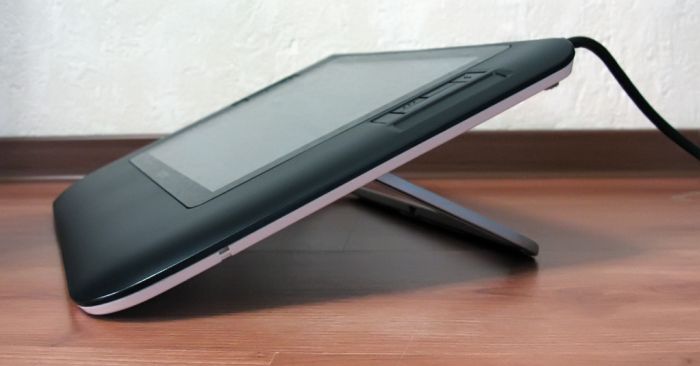
Tune in to “a lot of bukav” a small review (c) and traffic - we will feel together.
Wacom specializes in the production of tablets of various levels - from basic to professional. And, as far as I know, in this issue, no one is noticeable on her heels. I was already familiar with their products - a couple of years ago I bought myself a regular Wacom Intuos A5 tablet. Then its capabilities were more than enough for my needs, but only a person who is completely indifferent to pixels can pass by Wacom Cintiq ) And then ... by the will of fate we met with him - the world is cramped)
')
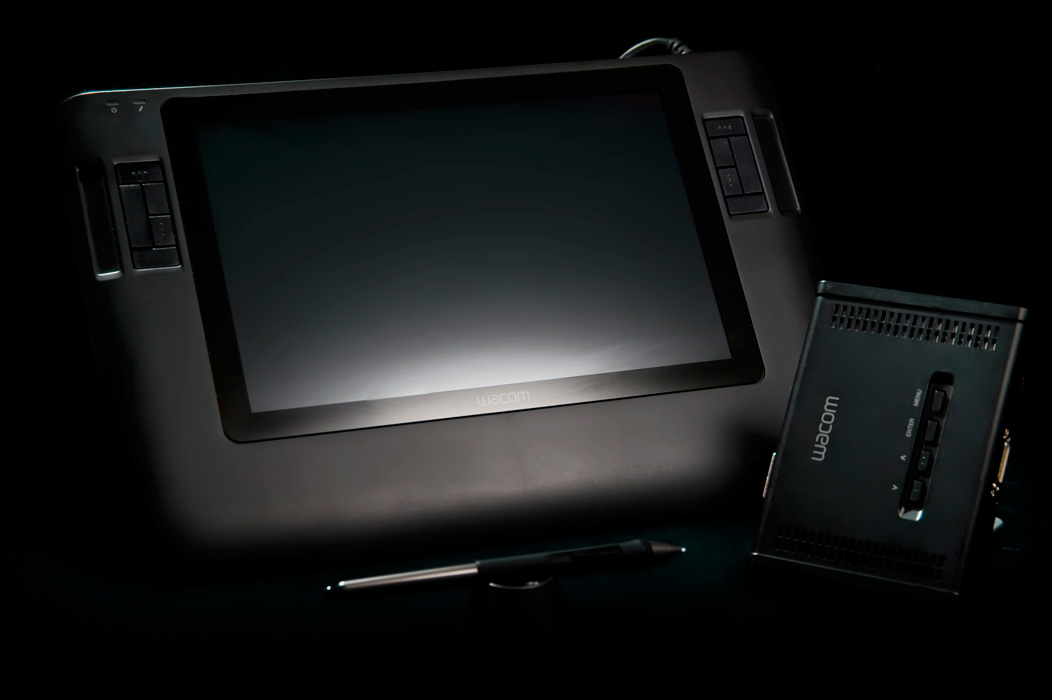
More and more communicating with various devices, he began to divide them into two different categories. The first take all sorts of ryushechkami, but they are so simple that they can be immediately taken and used without delving into the subtleties - all sorts of mice, clavs, speakers, players, etc.
The second category includes devices with which you can also immediately sit down to work, but the more “adult” level strongly hints that the instruction was put for good reason. These are all kinds of DSLRs, calibrators, laptops, NAS, etc.
This tablet belongs to the second group - opening the box, you understand that you are “taken” by professional sharpening, high technical level and all reasonableness. But when everything works, you involuntarily pay attention ... how comfortable and harmonious everything is)
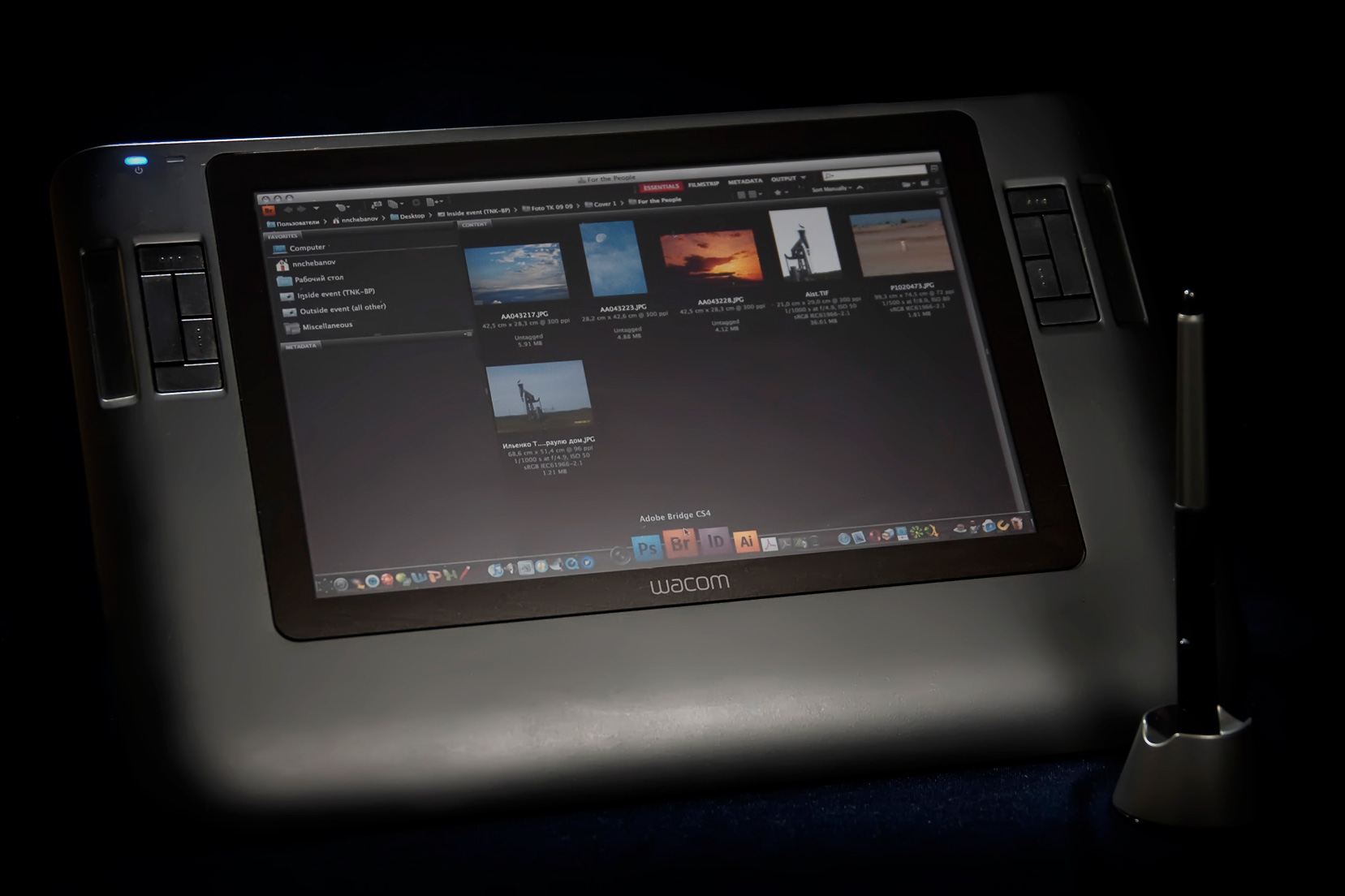
In general, it is difficult to catch my thought), nevertheless, everything in the box is needed to get to work and even a little more.
- Interactive tablet Wacom Cintiq 12WX ;
- Cintiq Grip Pen and stand for it;
- 5 interchangeable tips (3 standard, 1 Felt, 1 Stroke);
- Converter from one input to USB, DVI / VGA;
- DVI-D-DVI-I and DVI-I-VGA cords;
- Power supply + power cord;
- Installation Guide;
- Disk with software, firewood and manual.
In this case, the instruction is written on 180 black and white pages (in three languages) - there are answers to most of the emerging issues.
The feather on the design is exactly the same as in my tablet, only I have gray, and here it is black.

In short, it is an oblong pointer, on the reverse side of which an electronic “eraser” is located (by default), and on the other side - “drawing” tips that can be changed. All this has a rubberized insert (so that it is comfortable to hold in your hand), on which there is a programmable button (more precisely, there are two of them). For convenience and order, the pen is placed in a stand or put on it.

The converter is as simple as ever - a small (slightly smaller than an A5 format sheet) parallelepiped of black matte plastic, on top of it there are 4 buttons (similar to the buttons on the monitor - they allow you to customize the tablet).
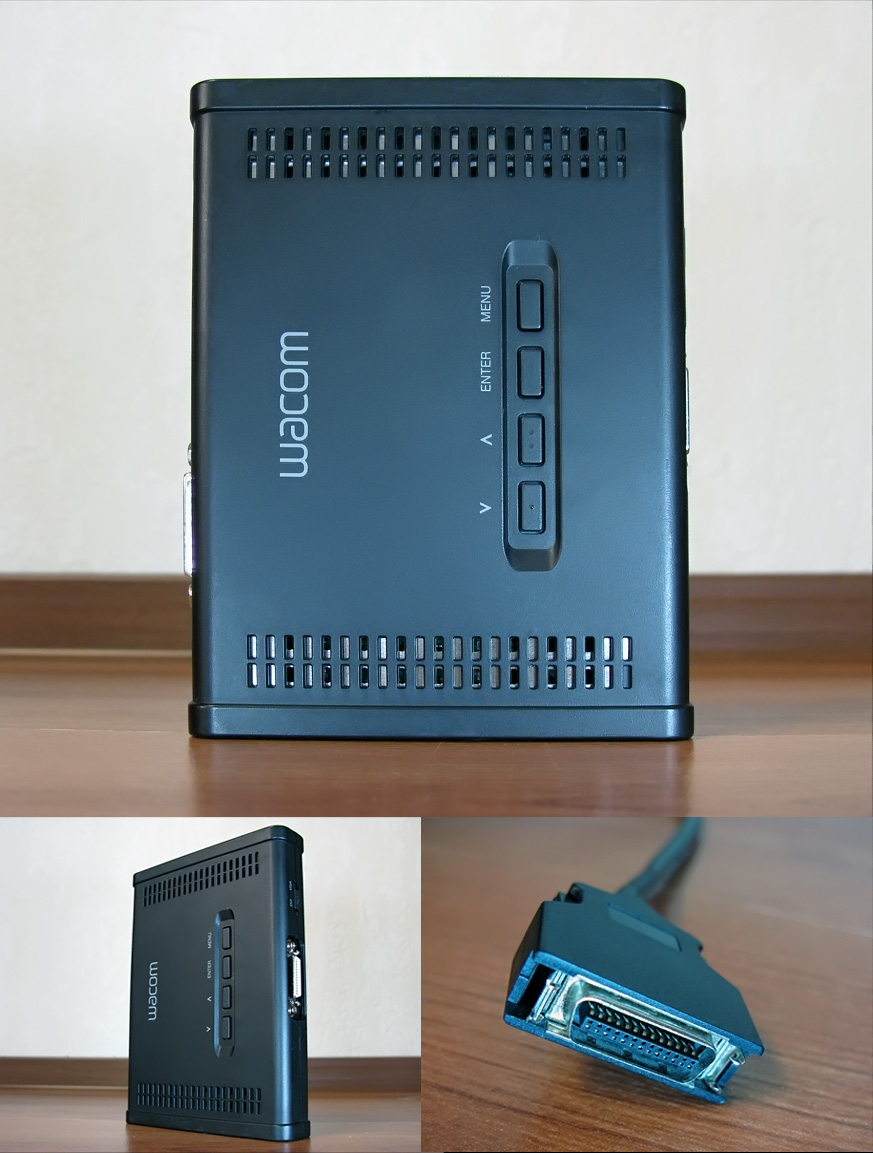
On the one hand there is a non-standard connector on the latch, into which the tablet itself is connected, as well as the DVI / VGA switch - depending on where the signal will come from.
On the reverse side - the above-mentioned DVI-I, USB-B (square USB, as in printers - is needed for the tablet to show up in the system) and a power connector.

Despite the fact that the tablet screen has a diagonal of only 12 inches (what is 12 inches in a graphics editor for a true professional?), I.e. in fact, the diagonal of the netbook ... the size of the device itself is not even very netbook and not even notebook. If you don't beat around the bush, it's 405x270x17 (mm) and weighs 2 kilograms.

Those. an intermediate conclusion immediately suggests itself - this device is more likely for creative lovers to draw (put an “album” on their knees and draw), rather than for professional photographers, designers, designers, etc. - they need the highest model of the series. So what, it all does not make the device less interesting! Go ahead.
The front panel (different from the matte screen) is dark gray, made of matte, rough plastic, which is somewhat similar to everyone’s favorite soft-touch. The screen itself does not protrude and is not depressed.
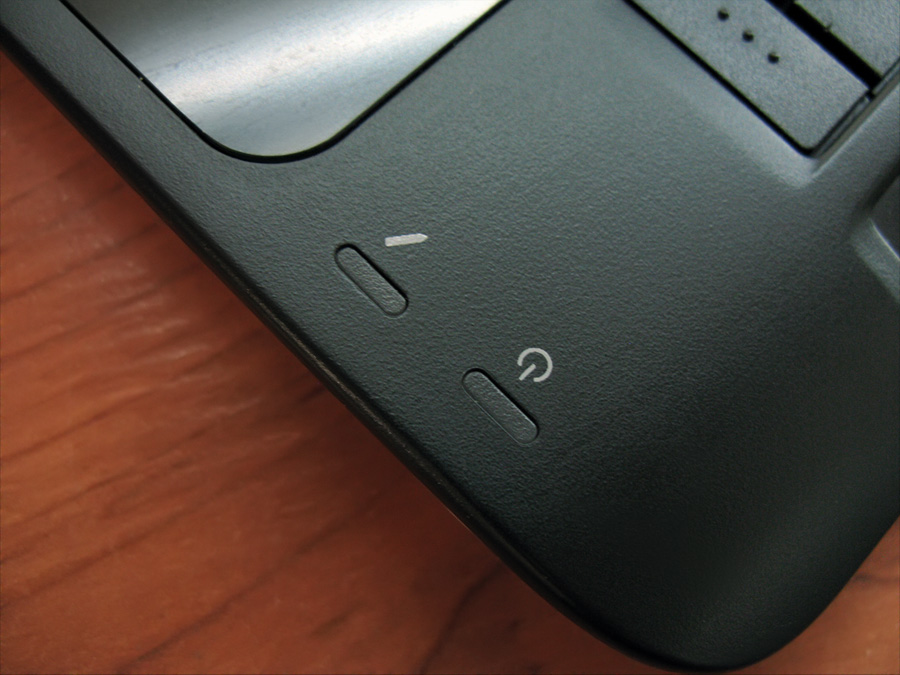
On the left, there are 2 indicators (job status and pen touch), under which there are 5 customizable buttons and one touch strip (touch stripe). The same block to the buttons with a strip is symmetrically reflected on the right side (which makes the device equally convenient for both left-handers and right-handers). The arrangement of the relief “dots” on the buttons is done in such a way that after a little practice it is impossible to confuse the buttons in places.

Thickness is all right - really, almost like an album. Therefore, on the sides nothing fit :)

But on the top there is a device power button (left) ...:

... and the stuck two-meter tail (aka power wire) on the right. From below (in front) you can see a fragment of the metal stand of the device - it snaps off and leans back no more than 80 degrees. All-metal support, tight (this is a plus), on the latch and with a rubber gasket - so as not to slip.
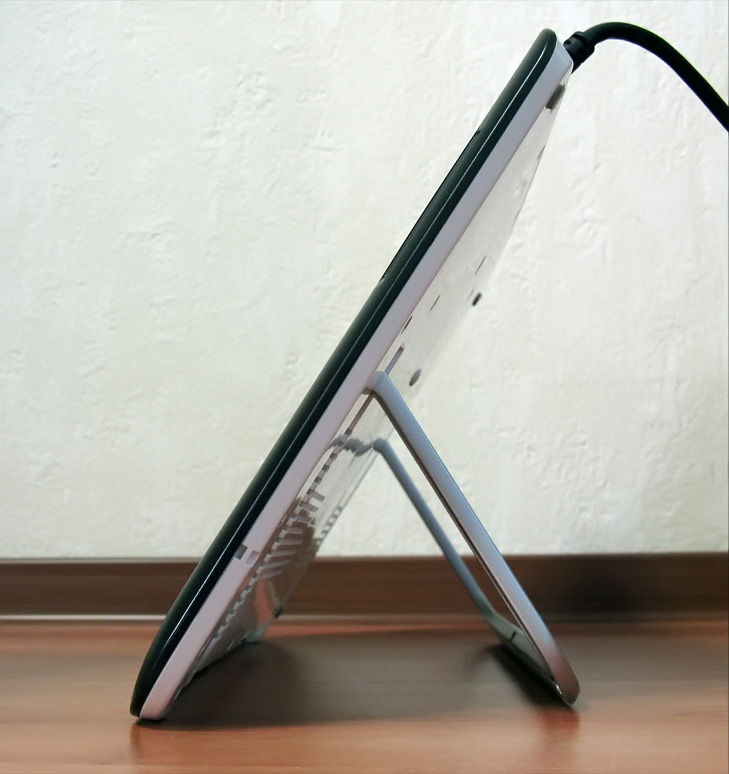
The entire “back” of the device is made of non-staining glossy white plastic, in the center of which are the holes of the VESA standard, for mounting on various brackets. In addition to the holes - a few forsyous legs.

In principle, there are no problems with the connection ... although no, they arose :) In general, the problem is the following (but I am sure that it is solved): I often connect an external monitor to a netbook — either the entire image is output to it, or the laptop is a “continuation” the screen where I take Winamp and ICQ so as not to waste time switching applications. I also wanted to do it this time - connect the tablet with the second screen ... everything connected. But if the tablet was a “continuation” of the first display, it was almost impossible to use a pen because of an incomprehensible addressing (after all, the tablet corners correspond to the corners of the desktop, respectively, if the desktop is stretched, then the movements will be proportional). Inconvenient.
If you make a tablet duplicating, then there was a problem with the resolution (on the tablet, the native resolution is WXGA, 1280x800, 16:10). Also uncomfortable. Therefore ... it was possible to work only in the case when the signal is output only to the tablet - then with the resolution all ok and with addressing. Such a double-edged sword
Perhaps this is all due to my lack of a widescreen monitor, or simply I was doing something wrong (I didn’t study the question, because there were no such problems before) - it’s quite possible that you just need to connect power, connect a tablet with a converter and that's it.
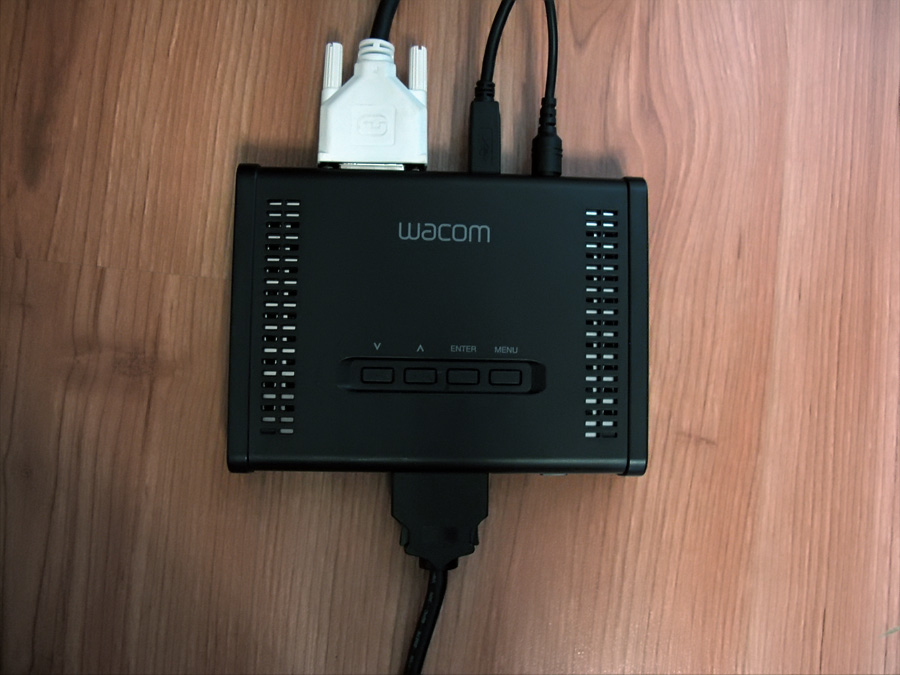
So, the desktop of the operating system is on my lap, it is somewhat unusual. The display gives a pretty good picture by color, but it is far from a record - for a huge number of design tasks it will be enough. The color depth is 24 bits, and the number of shades is 16.7 million. Viewing angles are approximately 170 degrees.
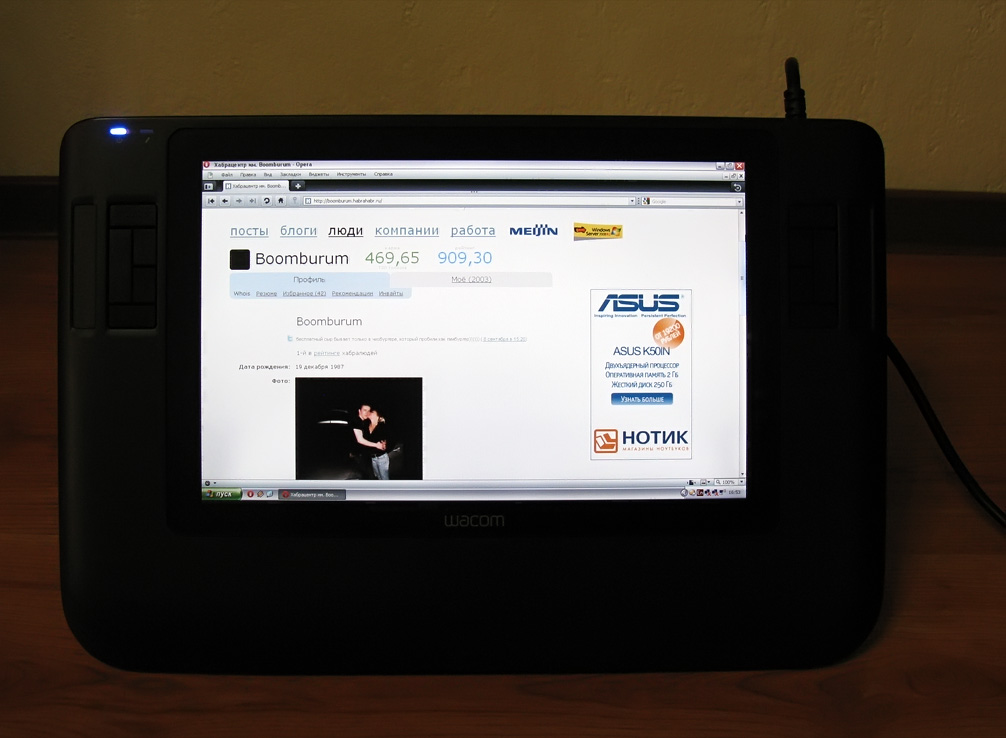
The tablet catches the movement of the pen when it is no higher than 1 centimeter above the surface. At our disposal - sensitivity to 1024 levels of pen pressure, as well as high resolution - 5020 lines per inch!
I used the tablet not so much for drawing, as for all kinds of photo processing - in addition to saving time and nerves (still, select-draw-paint) with a “pen” is much easier than with a mouse. Otherwise, the work can be described as easy and relaxed;) There is no need to get used to it, unlike a regular tablet.
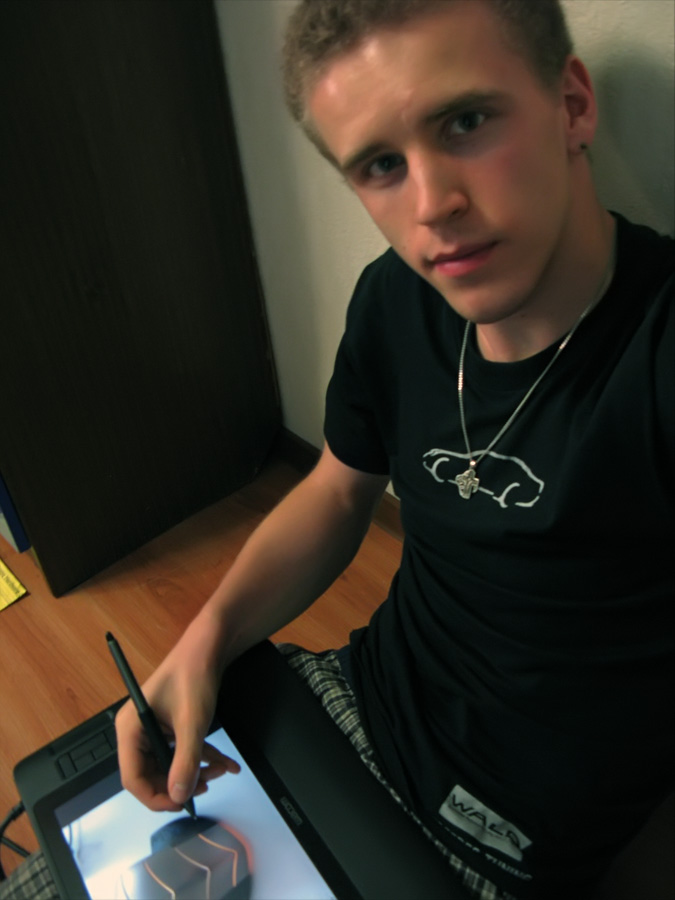
The disc included software in the face of Corel Painter Essentials 2 and Corel Painter Essentials 3 - well-known in narrow circles, well-established drawing programs. On the third (Wacom CD), as it is easy to guess, software for working with the tablet. I will not consider it in detail - see the reason below.
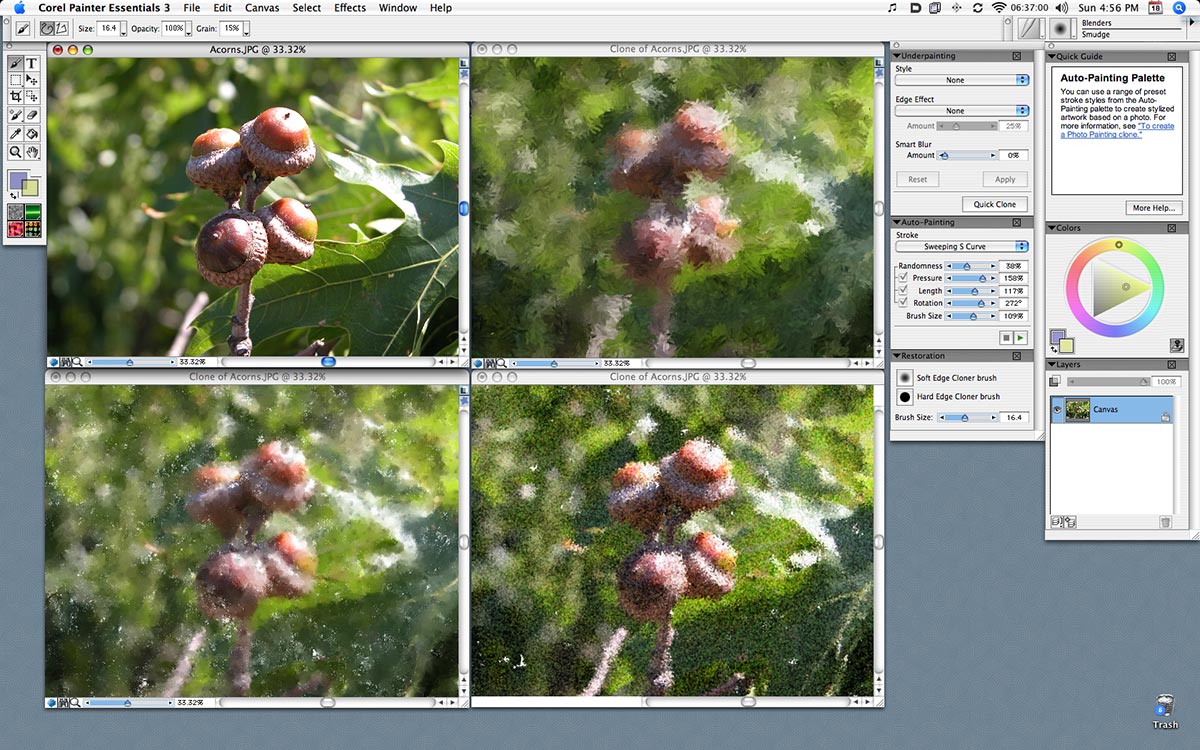
When I lived completely in the spirit of freelancing, I wrote a couple of stateek on the near-tablet theme. It's nice - two of them flaunt on the official website in the “Lessons” section - “We are making a photo ” and “ Setting up a Wacom Intuos3 A5 tablet to work in Adobe Photoshop ”.
During testing, there was no task “to draw something” - there is a small lack of time) However, in my portfolio you can see what the use of my first tablet resulted in (all the sketches were developed on it).


pros
- Rich equipment, detailed documentation;
- Pleasant body materials and the reliability of the structure itself as a whole;
- High-quality drivers, flexibility to configure different tools for different applications;
- High technical performance - suitable for both child and advanced amateur;
- Ease of use of the pen, the visibility of the tablet screen - "sat down and went."
Minuses
- There may be problems when connecting the device (in particular, setting the resolution), if it will be used by the second monitor.
- Large size and stationarity;
- High price ( from 50 thousand rubles).
If you are a little indifferent to drawing (and for this you consider the computer as a worthy alternative to rock art), then the tablet will definitely not hurt you. Another thing is what it is ... and what tasks you plan to perform on it.
If you draw from time to time with an interval of a month or buy a tablet for a child, it makes sense to save money and buy something at a primary or secondary level. In this case, I recommend Wacom Intuos - enough with his head.
If drawing is a good hobby or even the main means of income, and you want to draw visually and comfortably, it makes sense to look towards Wacom Cintiq tablets. At the same time prepare a suitcase of money - the pleasure is not cheap.
And if we talk about the tablet itself - some problems may arise during the first connection, otherwise - it is made in the best traditions of Wacom. I have no complaints about the software or hardware. Professionals of the business will definitely appreciate this “screen”.
Successes!

Tune in to “a lot of bukav” a small review (c) and traffic - we will feel together.
Wacom specializes in the production of tablets of various levels - from basic to professional. And, as far as I know, in this issue, no one is noticeable on her heels. I was already familiar with their products - a couple of years ago I bought myself a regular Wacom Intuos A5 tablet. Then its capabilities were more than enough for my needs, but only a person who is completely indifferent to pixels can pass by Wacom Cintiq ) And then ... by the will of fate we met with him - the world is cramped)
')

More and more communicating with various devices, he began to divide them into two different categories. The first take all sorts of ryushechkami, but they are so simple that they can be immediately taken and used without delving into the subtleties - all sorts of mice, clavs, speakers, players, etc.
The second category includes devices with which you can also immediately sit down to work, but the more “adult” level strongly hints that the instruction was put for good reason. These are all kinds of DSLRs, calibrators, laptops, NAS, etc.
This tablet belongs to the second group - opening the box, you understand that you are “taken” by professional sharpening, high technical level and all reasonableness. But when everything works, you involuntarily pay attention ... how comfortable and harmonious everything is)

In general, it is difficult to catch my thought), nevertheless, everything in the box is needed to get to work and even a little more.
- Interactive tablet Wacom Cintiq 12WX ;
- Cintiq Grip Pen and stand for it;
- 5 interchangeable tips (3 standard, 1 Felt, 1 Stroke);
- Converter from one input to USB, DVI / VGA;
- DVI-D-DVI-I and DVI-I-VGA cords;
- Power supply + power cord;
- Installation Guide;
- Disk with software, firewood and manual.
In this case, the instruction is written on 180 black and white pages (in three languages) - there are answers to most of the emerging issues.
Appearance
The feather on the design is exactly the same as in my tablet, only I have gray, and here it is black.

In short, it is an oblong pointer, on the reverse side of which an electronic “eraser” is located (by default), and on the other side - “drawing” tips that can be changed. All this has a rubberized insert (so that it is comfortable to hold in your hand), on which there is a programmable button (more precisely, there are two of them). For convenience and order, the pen is placed in a stand or put on it.

The converter is as simple as ever - a small (slightly smaller than an A5 format sheet) parallelepiped of black matte plastic, on top of it there are 4 buttons (similar to the buttons on the monitor - they allow you to customize the tablet).

On the one hand there is a non-standard connector on the latch, into which the tablet itself is connected, as well as the DVI / VGA switch - depending on where the signal will come from.
On the reverse side - the above-mentioned DVI-I, USB-B (square USB, as in printers - is needed for the tablet to show up in the system) and a power connector.

Despite the fact that the tablet screen has a diagonal of only 12 inches (what is 12 inches in a graphics editor for a true professional?), I.e. in fact, the diagonal of the netbook ... the size of the device itself is not even very netbook and not even notebook. If you don't beat around the bush, it's 405x270x17 (mm) and weighs 2 kilograms.

Those. an intermediate conclusion immediately suggests itself - this device is more likely for creative lovers to draw (put an “album” on their knees and draw), rather than for professional photographers, designers, designers, etc. - they need the highest model of the series. So what, it all does not make the device less interesting! Go ahead.
The front panel (different from the matte screen) is dark gray, made of matte, rough plastic, which is somewhat similar to everyone’s favorite soft-touch. The screen itself does not protrude and is not depressed.

On the left, there are 2 indicators (job status and pen touch), under which there are 5 customizable buttons and one touch strip (touch stripe). The same block to the buttons with a strip is symmetrically reflected on the right side (which makes the device equally convenient for both left-handers and right-handers). The arrangement of the relief “dots” on the buttons is done in such a way that after a little practice it is impossible to confuse the buttons in places.

Thickness is all right - really, almost like an album. Therefore, on the sides nothing fit :)

But on the top there is a device power button (left) ...:

... and the stuck two-meter tail (aka power wire) on the right. From below (in front) you can see a fragment of the metal stand of the device - it snaps off and leans back no more than 80 degrees. All-metal support, tight (this is a plus), on the latch and with a rubber gasket - so as not to slip.

The entire “back” of the device is made of non-staining glossy white plastic, in the center of which are the holes of the VESA standard, for mounting on various brackets. In addition to the holes - a few forsyous legs.

Connect and work
In principle, there are no problems with the connection ... although no, they arose :) In general, the problem is the following (but I am sure that it is solved): I often connect an external monitor to a netbook — either the entire image is output to it, or the laptop is a “continuation” the screen where I take Winamp and ICQ so as not to waste time switching applications. I also wanted to do it this time - connect the tablet with the second screen ... everything connected. But if the tablet was a “continuation” of the first display, it was almost impossible to use a pen because of an incomprehensible addressing (after all, the tablet corners correspond to the corners of the desktop, respectively, if the desktop is stretched, then the movements will be proportional). Inconvenient.
If you make a tablet duplicating, then there was a problem with the resolution (on the tablet, the native resolution is WXGA, 1280x800, 16:10). Also uncomfortable. Therefore ... it was possible to work only in the case when the signal is output only to the tablet - then with the resolution all ok and with addressing. Such a double-edged sword
Perhaps this is all due to my lack of a widescreen monitor, or simply I was doing something wrong (I didn’t study the question, because there were no such problems before) - it’s quite possible that you just need to connect power, connect a tablet with a converter and that's it.

So, the desktop of the operating system is on my lap, it is somewhat unusual. The display gives a pretty good picture by color, but it is far from a record - for a huge number of design tasks it will be enough. The color depth is 24 bits, and the number of shades is 16.7 million. Viewing angles are approximately 170 degrees.

The tablet catches the movement of the pen when it is no higher than 1 centimeter above the surface. At our disposal - sensitivity to 1024 levels of pen pressure, as well as high resolution - 5020 lines per inch!
I used the tablet not so much for drawing, as for all kinds of photo processing - in addition to saving time and nerves (still, select-draw-paint) with a “pen” is much easier than with a mouse. Otherwise, the work can be described as easy and relaxed;) There is no need to get used to it, unlike a regular tablet.

The disc included software in the face of Corel Painter Essentials 2 and Corel Painter Essentials 3 - well-known in narrow circles, well-established drawing programs. On the third (Wacom CD), as it is easy to guess, software for working with the tablet. I will not consider it in detail - see the reason below.

+1 in karma
When I lived completely in the spirit of freelancing, I wrote a couple of stateek on the near-tablet theme. It's nice - two of them flaunt on the official website in the “Lessons” section - “We are making a photo ” and “ Setting up a Wacom Intuos3 A5 tablet to work in Adobe Photoshop ”.
During testing, there was no task “to draw something” - there is a small lack of time) However, in my portfolio you can see what the use of my first tablet resulted in (all the sketches were developed on it).


Advantages and disadvantages
pros
- Rich equipment, detailed documentation;
- Pleasant body materials and the reliability of the structure itself as a whole;
- High-quality drivers, flexibility to configure different tools for different applications;
- High technical performance - suitable for both child and advanced amateur;
- Ease of use of the pen, the visibility of the tablet screen - "sat down and went."
Minuses
- There may be problems when connecting the device (in particular, setting the resolution), if it will be used by the second monitor.
- Large size and stationarity;
- High price ( from 50 thousand rubles).
Total
If you are a little indifferent to drawing (and for this you consider the computer as a worthy alternative to rock art), then the tablet will definitely not hurt you. Another thing is what it is ... and what tasks you plan to perform on it.
If you draw from time to time with an interval of a month or buy a tablet for a child, it makes sense to save money and buy something at a primary or secondary level. In this case, I recommend Wacom Intuos - enough with his head.
If drawing is a good hobby or even the main means of income, and you want to draw visually and comfortably, it makes sense to look towards Wacom Cintiq tablets. At the same time prepare a suitcase of money - the pleasure is not cheap.
And if we talk about the tablet itself - some problems may arise during the first connection, otherwise - it is made in the best traditions of Wacom. I have no complaints about the software or hardware. Professionals of the business will definitely appreciate this “screen”.
Successes!
Source: https://habr.com/ru/post/72830/
All Articles